What the English and Germans call Still Life and Stilleben, the French and Spanish know as Nature Morte and Naturaleza Muerta. Such cultural differences regarding a venerable art form suggest important questions about the artistic depiction of nature: Is it a mortification, a kind of embalming; or is it a vehicle for some more profound vital process—does art ‘give back’ to nature? Maybe the ‘stilling’ of life is an anglo-germanic euphemism for a crime referenced more directly in the French and Spanish … Or was nature already dead before the artist got there, and if so, by whose hand…?
Such troubling questions always arise when considering the cultural parameters within which art frames nature. British artist Paul Chaney’s work thematises and disrupts this ‘framing’ in several ways, some subtle, some more confrontational. His work is above all concerned with an effort to coexist with other living beings; but the seriousness with which he takes this problem is matched by a keen awareness that it is never solved, but only deepens as it is pursued.
To become close to nature, for Chaney, is at the very least to repudiate the notion that the natural world is something unreservedly worthy of our admiration, something from which we can draw some comforting meaning. How to maintain a pious ‘respect’ for a nature whose finer details include necrophiliac duck gangbangs (Duck Fuck, 2005)? Chaney certainly does not shrink from the less ‘presentable’ aspects of life and death in the wild. But in an apparent effort to ameliorate such unpleasant encounters, in many works he lavishes exorbitant attentions upon certain unlikely specimens, carrying out his own selective framing in works whose surface combination of the reverential and the parodic harbours a sophisticated thinking of man’s relation to nature. Carefully-constructed shrines for domestic insect casualties (Windowsill Victims of Burrow Bridge, 2000), last rites and burials for roadside fatalities (Roadkill Rituals, 2000), assiduously compiled reports of bee mortality (Falmouth Bee Report, 2005), and documentation of inexplicable rodent deaths (The Shrew Mysteries, 2006-7)—the temptation is to read such works as gestures of defiance against nature’s senseless waste. It is as if the artist hoped for redemption through these small symbolic acts of solidarity: Animal cohabitants are respected, their lives are celebrated, their deaths recorded, their bodies interred. Indeed, Chaney speaks of a ‘universal morality’ opposed to human morality. However, the more profound effect of this posthumous respect is that the privileged specimens become an analogy for the ‘unnatural’ selective privileging of the human animal: The disproportionate meaning we invest in human death is all the more starkly revealed when echoed in the pharoanic pomp of an insect funeral. In many of Chaney’s works nonhumans are very deliberately individualised and facialised, and some works are explicit experiments in anthropomorphism: In Cerambyx Cerdo (2008), a beetle beautifully cast in silver has a tiny, troubled human face irresistibly recalling Kafka’s Gregor; in Bee Unit (2007), the bodies of real insects are endowed with rudimentary sculpted faces, and preserved in what look like diminutive science-fictional cryogenic chambers; in Falmouth Bee Report (2005) and Fall 07 (2007) found dead insects are preserved in tiny, numbered lead coffins. Such works emphasise the fantasy of individualisation that is invariably at work beneath the demand for empathy with the denizens of nature: Chaney makes ‘units’ of the anonymous masses (Units, 2003), buries unfortunate creatures in marked graves (Roadkill Graveyard, 2004), Field Graveyard, 2007), gives them miniature shrines in holy places (Bee Shrine Placements, 2000). But this extension of individual care to the ranks of the nonhuman only serves to remind us that, since prolific death and suffering are the rule rather than the exception in nature, since the planet feasts on an endlessly-renewed humus of ‘Chaney readymades’, such empathic acts are also incalculably cruel, drastically selective. The programme for a ‘universal morality’ leads to this dispiriting conclusion: no matter how many bees you bury, ‘someone’ will always get left out.
But at this point, the artist’s practice continues apace, diverging into a variety of hysterical operations of mapping, reporting, narrating—negotiating the unlimited terabytes of data that must be processed in order to afford every single moribund pigeon the same level of emotional investment as Bambi’s mother. In these futile dispatches Chaney suggests a more profound and disturbing delirium, hints of a parallel culture in which we would wander the halls of art galleries admiring busts of great rats and finely-painted family portraits of stag beetles, returning home to the monotony of Bee TV, CSI: Hedgerow, and Coleoptera Crimewatch … A macabre twenty-four hour news feed from Mother Nature: reconstruction of magpie’s final flight (One for Sorrow, 2007) … bluetit found in vicinity of mcshake container (Roadkill Graveyard, 2007) … no evidence of a struggle … dead bumblebee to star in posthumous road movie (Bee Adventure, 2003) … last supper to be re-enacted by beetles (The Last Supper, 1998) … shrew mysteries latest … Coexistence becomes a pandemoniac discord, and the nature-lover becomes implicated in something criminal and/or farcical.
Chaney is a professed monist—for him, the strong hypothesis that ‘all matter is from one source’ implies a rescinding of any special privilege granted to the human. But his monism inherits an ironic edge from his interest in ‘cognitive dissonance’—our ability to maintain, against all the evidence, our conceit that humans are the unmoving centre of the universe. It is only the persistence of this prejudice, of course, which in turn enables us to paint the grand panorama of ‘nature’ gushing around us in all its beauty. Chaney knows, therefore, that there is no acceptable ‘solution’ to the problems he poses. His irony, however, is not the cynical resignation of the city-dweller. For at the cutting edge of his practice, he battles with unaestheticised nature as few of us do. His central, ongoing work f i e l d c l u b (2004-present) consists in his own attempt to live ‘off-grid’ in a remote field in the southwest of the UK. He grows his own food, disconnected from public utilities and drawing as little on outside resources as possible. Much of his recent work continues to document incidents in the day-to-day course of this experiment in living, small occurrences which never fail to blacken the name of Eden. This close personal involvement empowers Chaney to challenge the credo according to which just a little love and goodwill (a few more landscape paintings, perhaps?) could enable humans to temper their depradations in favour of a more gentle and wholesome coexistence with nature.
In a recent solo show The Lonely Now (at Goldfish Contemporary Fine Art, Penzance, UK), pedestrians passing the gallery were caught unawares by the video work One for Sorrow (2007): The camera operator – presumably the artist himself – ‘re-enacts’ a dead magpie’s final flight by affixing it to a stick and propelling it gracefully around a field. This uneasy combination of the grotesque and the tender is typical of Chaney, who leaves it to the viewer to unfold its complex proposition about man and nature. Probing the faultlines in our relationship to the environment, this work warns us against exalting an imaginary untouched nature whilst exempting ourselves from the reality of an interconnected ecology. Nothing expresses this more poignantly than the small sculpture Memorial to Roadkill Foxes, in which a skulk of foxes peer gloomily at a comrade laid out by a passing car. The scene takes a terrible turn when we learn that the animals are made from reprocessed car wheel balancing weights. The subversion of content by material is of course a commonplace in contemporary art, but Chaney’s vacillating sensitivity to both sides of the thought is palpable, maintaining the work’s irony on a knife-edge. Mourning and guilt are forged of the same stuff; What makes it possible to conceive of ‘nature’ also makes it inevitable that we have already betrayed it. But if this is The Fall, then Eden was never anything but a retroactive myth of origin, a fantasy of self-effacement.
In the video Vole-No Pulse (2007), a small rodent accidentally killed by a lawnmower turns out to be pregnant, giving rise to the kind of horrifying and irresolvable moral dilemma common to any agricultural endeavour, but small change compared to the quotidian outrages perpetrated by Mother Nature herself. What would Jesus do? Install incubators? Open an orphanage…? The vole is gently interred in a deep hole, her belly still pullulating with the unborn. Here Chaney’s persistent pursuit of reverence in the face of adversity dramatises the incongruence of moral and aesthetic discourse in such a setting. Likewise, in Slug’o’metric (How Many Slugs Maketh the Man?) (2007), an ingenious gadget is constructed to simultaneously effectuate and tabulate slug elimination in the vegetable plot, upsetting the green fantasy of a non-aggressive ‘living with the land’.
One of the most complex and striking works in the show, The Library at St Kilda (2008), deploys the same problematising spirals, but in a more ramified and complex manner. St Kilda is a tiny Scottish island whose last inhabitants were evacuated in the 1930s after their indigeneous culture, isolated for centuries, had been blighted by missionaries and diseases from the mainland. A dessicated puffin recovered from the nearby coast reclines on a plinth, its back yawning open to reveal a perfectly-sculpted miniature library. Everybody loves a Puffin, the work’s subtitle tells us, but our relation to nature presupposes a conceptual treasury, a literary legacy, a cultural history. St Kilda, with its intensified interplay between human culture and animal life, is emblematic of the interconnectedness Chaney seeks to interrogate, but its own virtual ‘library’ of cultural knowledge is now irretrievably lost, and the puffins, threatened by extinction, represent a further potential loss in the planet’s genetic-informational diversity.
Whereas this polysemic piece sees Chaney’s talent for the poetic assemblage reaching out beyond his own field of experience, another room houses a monument to his base-camp: 24 Hour f i e l d c l u b Museum (2008) consists of a large wine-chiller cabinet repurposed as a museum case, powered by a solar-charged truck battery and containing classified and inventoried artefacts discovered during f i e l d c l u b activities. The gentle glow from the cabinet evokes the early morning light of a lonely dawn, and indeed an accompanying lightbox photograph shows the museum in situ, supplementing sunrise in Chaney’s field with the radiant remnants of yesterday’s solar-power, and exhibiting to the land its own history—as if its illuminated interior constituted the memory register and the burgeoning self-consciousness of the field itself as it becomes cultivated and humanised.
Admitting that the logos of ‘ecology’ is always already recoded, messed up, and unnatural, Chaney enhances it with a dark ecology of uncomfortable co-existence and intervention. A bracing antidote to all that is sentimental, deluded and terminally bourgeois in discourses of the rural and ‘environmental’, Chaney proposes more profound and twisted philosophical roots for these discourses, plunging the viewer into strange situations, emotions and perceptions that expose the urgency and complexity, not to mention the humour and the irony, of the problem at hand.
Perhaps it is the Czech word Zátiší that offers the most telling definition of how art can still life: The word can be read as implying a movement beyond silence, into retreat and seclusion. We may seek to retire into secluded images of life and of nature, into a placid, strifeless union that is our own deluded creation. In Chaney‘s work as in his unconventional life, an
uncomfortable and messy reality continues to wreak its noisome revenge on this project.
www.paulchaney.co.uk








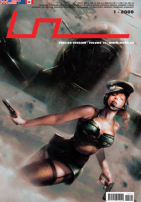


























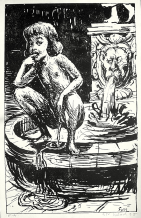
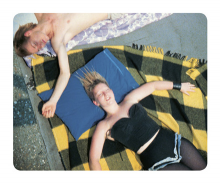
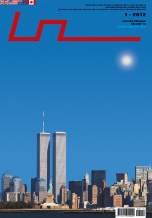
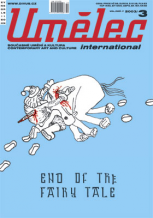


 New book by I.M.Jirous in English at our online bookshop.
New book by I.M.Jirous in English at our online bookshop.
Comentarios
Actualmente no hay comentariosAgregar nuevo comentario